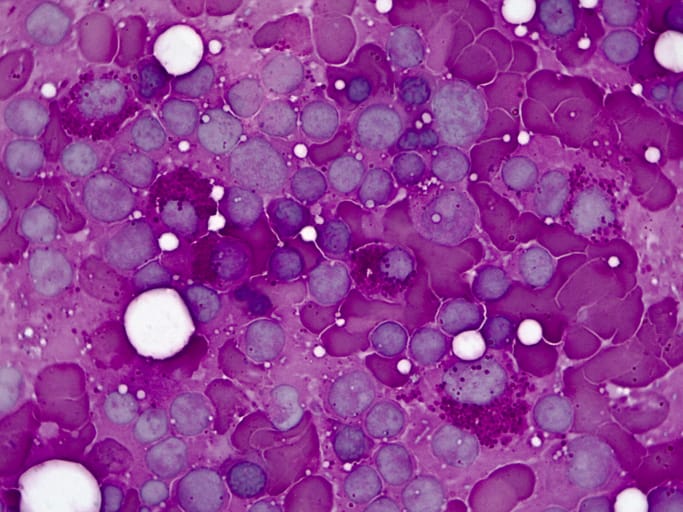Systemic mastocytosis (SM) is a disease characterized by the abnormal proliferation of mast cells in the bone marrow, skin and internal organs.
Bone marrow mastocytosis (BMM) is a subtype of indolent systemic mastocytosis (ISM) that occurs when the excessive production of mast cells accumulates in the bone marrow, affecting red blood cells, white blood cells and platelets. It is often underdiagnosed because of the absence of common mast cell disease symptoms, particularly skin lesions.
What are the types of SM?
There are five subtypes of SM: indolent SM, the most common and least severe subtype; smoldering SM, which can progress to more serious illness; aggressive SM; SM with an associated hematologic neoplasm; and mast cell leukemia, the rarest and most severe subtype.
What are the main symptoms of BMM?
Diagnosis is often difficult in BMM as there are few symptoms. It presents mostly with severe allergic reactions triggered by wasps or bees, often involving life-threatening events of anaphylaxis. Unexplained fragility, a low bone mineral density or a diagnosis of osteoporosis are also common among people living with BMM.
Read more about SM testing and diagnosis
While there are no skin lesions in BMM, other more classic symptoms of ISM may occur, including skin flushing, fatigue, low mood, gastrointestinal discomfort, nausea, vomiting and diarrhea.
How is BMM diagnosed?
To achieve the best outcomes in BMM, early diagnosis is essential. A lack of knowledge and understanding of the potentially life-threatening risk of anaphylaxis can be fatal. Awareness of the risks of bone fragility is also important in avoiding fractures and disease progression into severe osteoporosis.
Diagnosis of BMM that differentiates it from classic ISM takes into consideration any reported severe anaphylactic allergic reactions, a bee or wasp sting allergy and bone fragility or low bone density. Additionally, abnormal sT levels are a good indicator of mast cell burden. BMM is more commonly found in older males.
Managing BMM
As a subtype of ISM, BMM is treated with antihistamines and mast cell stabilizers to help slow disease progression and manage the effect of symptoms on daily life.
Two or more epinephrine injections must always be carried to be used in the case of anaphylaxis, which is usually the result of an insect sting but may also be related to high-histamine food or certain medications. A severe allergy to wasp or bee stings, also known as a Hymenoptera sting allergy, will require life-long Hymenoptera venom immunotherapy (VIT).
Bone fragility and osteoporosis is managed with bisphosphonates, which help increase bone density and reduce the risk of bone fractures.
As with all cases of SM, lifestyle and diet modifications and vigilance are essential to avoiding triggers that activate symptom episodes.

